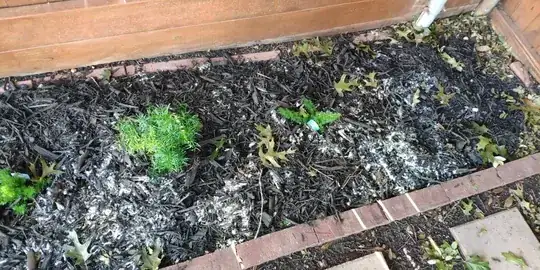There are many reasons why you add bark or wood chip mulch to your beds but one is that it provides a slow release of organic nutrients as it breaks down.
it doesn't break down of its own free will it requires fungi to break down the very complex molecules of lignin in the wood before other micro-organisms can also begin on the plant tissue.
Whilst you might cover the entire bed with mulch in the autumn, come spring, you would ideally need to don a pair of gloves and slightly pull it away from trees, shrubs and new growth of other plants so they can grow on, free of an contact with the mulch but it is no big deal if you don't.
The fungal mycelium is only interested in eating dead or dying matter and therefore your living plants are 99% safe from their clutches, so I would say to you to not worry one bit about it and worry more about reducing the amount of water on those beds since such blooms tend to rise when the soil is overly wet as seems the case in your picture.
As soon as the soil warms up and dries off, the fungal blooms will die back and the mulch will perform its second and third function - reducing the chance of weeds to take hold and helping the soil to resist evaporation.
The quality of mulch does vary but from my experience here in the UK, you need fungi on your mulch for it to perform the first function - slow release of nutrients.
In the words on the front cover of The Hitchhikers' Guide to Galaxy - Don't Panic !
